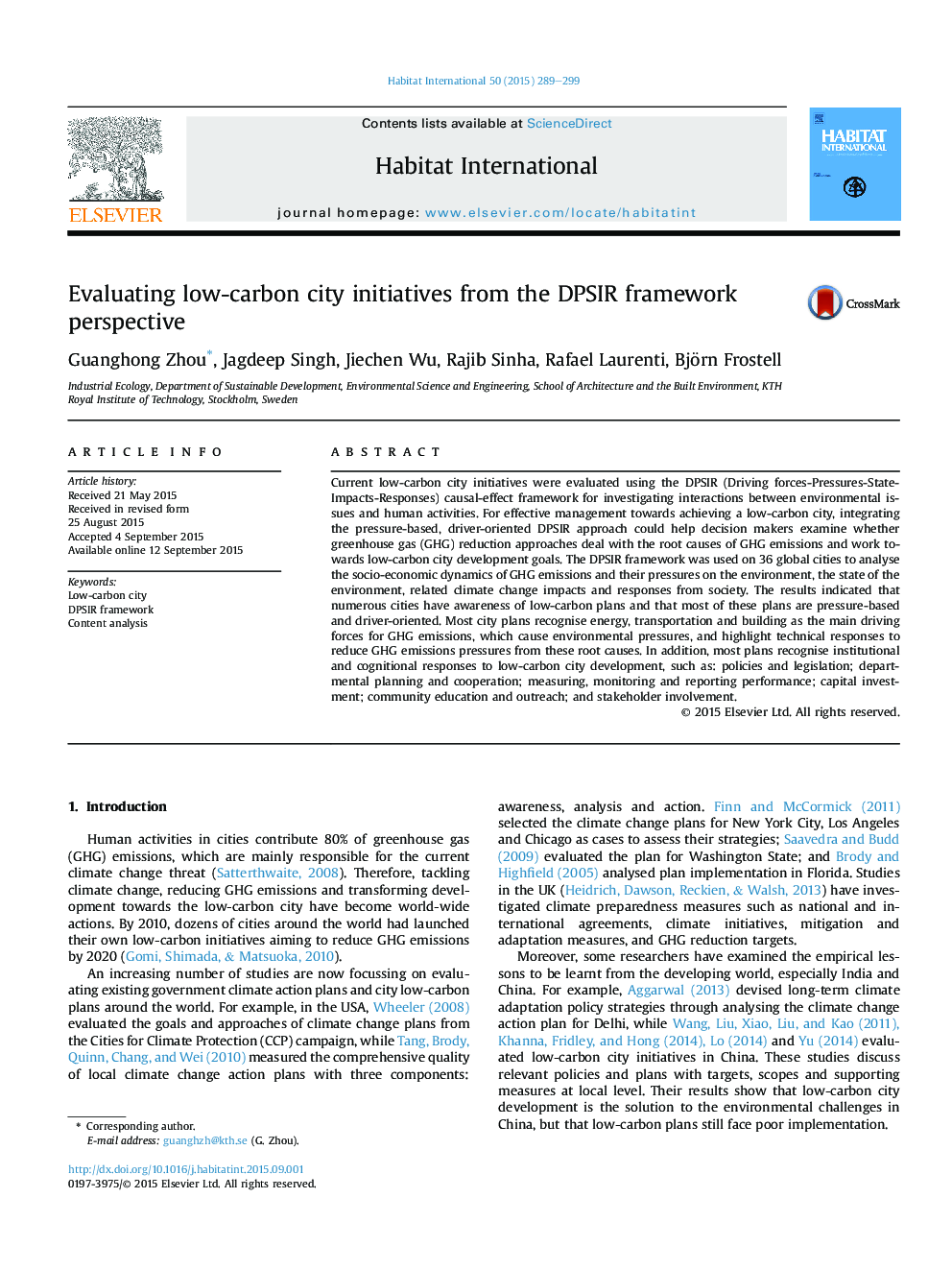| Article ID | Journal | Published Year | Pages | File Type |
|---|---|---|---|---|
| 7455974 | Habitat International | 2015 | 11 Pages |
Abstract
Current low-carbon city initiatives were evaluated using the DPSIR (Driving forces-Pressures-State-Impacts-Responses) causal-effect framework for investigating interactions between environmental issues and human activities. For effective management towards achieving a low-carbon city, integrating the pressure-based, driver-oriented DPSIR approach could help decision makers examine whether greenhouse gas (GHG) reduction approaches deal with the root causes of GHG emissions and work towards low-carbon city development goals. The DPSIR framework was used on 36 global cities to analyse the socio-economic dynamics of GHG emissions and their pressures on the environment, the state of the environment, related climate change impacts and responses from society. The results indicated that numerous cities have awareness of low-carbon plans and that most of these plans are pressure-based and driver-oriented. Most city plans recognise energy, transportation and building as the main driving forces for GHG emissions, which cause environmental pressures, and highlight technical responses to reduce GHG emissions pressures from these root causes. In addition, most plans recognise institutional and cognitional responses to low-carbon city development, such as: policies and legislation; departmental planning and cooperation; measuring, monitoring and reporting performance; capital investment; community education and outreach; and stakeholder involvement.
Related Topics
Social Sciences and Humanities
Social Sciences
Development
Authors
Guanghong Zhou, Jagdeep Singh, Jiechen Wu, Rajib Sinha, Rafael Laurenti, Björn Frostell,
